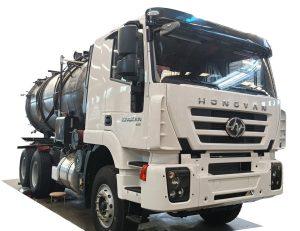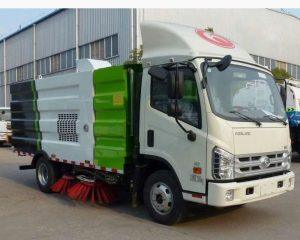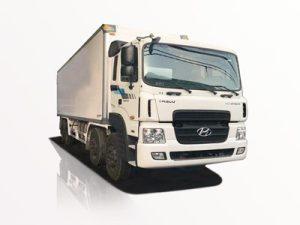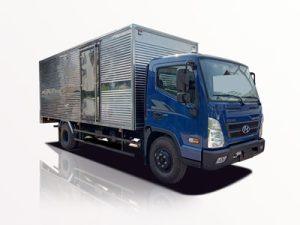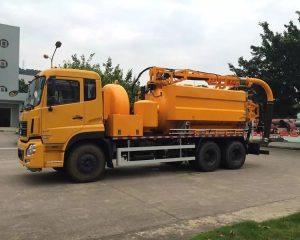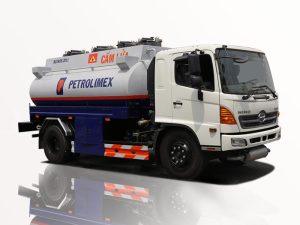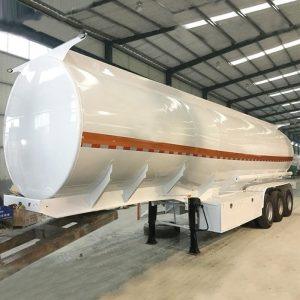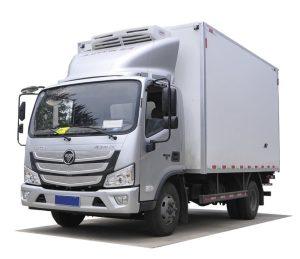Monday to Saturday - 8:00 -17:30
Understanding the Petroleum Delivery Truck: A Comprehensive Guide
Introduction
Petroleum delivery trucks play a critical role in the transportation and distribution of oil and oil products. These specialized vehicles are designed to safely transport various forms of petroleum, including gasoline, diesel, and lubricants, from refineries to storage facilities and directly to consumers. With the growing importance of fuel logistics in today’s economy, understanding the functionality, types, maintenance, and regulations surrounding petroleum delivery trucks is essential for businesses, drivers, and consumers alike. This article will delve into the various aspects of petroleum delivery trucks, offering insights, practical examples, and tips for effective operation and maintenance.
The Role of Petroleum Delivery Trucks in the Industry
Understanding Petroleum Transportation
Petroleum delivery trucks are pivotal in ensuring a steady supply of fuel to various sectors, including transportation, manufacturing, and agriculture. The trucks are equipped to handle large quantities of petroleum products, showcasing features that ensure safety and compliance with environmental regulations.
Types of Petroleum Delivery Trucks
- Bulk Tanker Trucks: These trucks are designed to carry large volumes of petroleum products. They typically have a cylindrical tank that can hold thousands of gallons of liquid.
- Tank Trucks: Similar to bulk tankers but are usually smaller and used for shorter distances. They can transport a variety of fuel types.
- Bobtail Trucks: These trucks have a tank mounted directly on the chassis and do not require a trailer. They are ideal for local deliveries.
Key Features of Petroleum Delivery Trucks
Tank Construction and Design
The construction of a petroleum delivery truck’s tank is crucial for safety and efficiency. Common materials include:
- Stainless Steel: Resistant to corrosion and easy to clean, ideal for transport.
- Aluminum: Lightweight but requires regular maintenance to prevent dents.
- Composite Materials: Used for insulated tanks that maintain the temperature of certain petroleum products.
Safety Features
Safety is paramount in the petroleum delivery industry. Key safety features include:
- Emergency Shut-off Valves: Automatically shut off the flow of fuel to prevent spills.
- Anti-lock Braking Systems (ABS): Helps maintain control while stopping.
- GPS Tracking: Allows for real-time monitoring and emergency management.
Operation of Petroleum Delivery Trucks
Loading and Unloading Procedures
Proper loading and unloading of petroleum products are essential for safety. Here are steps to follow:
- Ensure the truck is parked on level ground.
- Connect grounding cables to prevent static electricity.
- Use the correct type of hose for the product being delivered.
- Monitor flow rates to avoid overfilling tanks.
Fuel Delivery Scheduling
Efficient delivery scheduling is an integral part of operations. Consider these methods:
- Route Optimization Software: This technology allows companies to plan fuel routes that minimize travel time and costs.
- Customer Demand Forecasting: Predicting when customers will need fuel can improve delivery efficiency and customer satisfaction.
Maintenance of Petroleum Delivery Trucks
Regular Inspections
Regular inspections can prevent costly breakdowns. Key inspection points include:
- Tires and brakes
- Tank integrity checks for leaks
- Emission control systems
Routine Maintenance Checks
Routine maintenance tasks include:
| Maintenance Task | Frequency | Details |
|---|---|---|
| Oil Changes | Every 5,000 miles | Ensures optimal engine performance |
| Brake Inspection | Every 10,000 miles | Check for wear and tear |
| Tire Rotation | Every 5,000-7,500 miles | Prolongs tire life and improves handling |
Regulations Governing Petroleum Delivery Trucks
Federal Regulations
In the United States, the Department of Transportation (DOT) and the Environmental Protection Agency (EPA) enforce regulations related to petroleum transportation. Key regulations include:
- Hazardous Materials Regulations (HMR): These regulate the transportation of hazardous materials to ensure safety.
- Tank Vehicle Endorsements: Drivers must obtain specific endorsements to operate tank trucks.
State and Local Regulations
In addition to federal regulations, state and local governments may impose their own rules governing fuel delivery, including zoning laws and permits. It is essential to stay informed about these regulations to avoid fines and ensure safe operations.
Choosing the Right Petroleum Delivery Truck
Assessing Your Needs
When selecting a petroleum delivery truck, consider the following:
- Volume Requirements: Estimate the average fuel volume needed for deliveries.
- Type of Fuel: Different fuels may require different types of tanks (e.g., for gasoline vs. diesel).
- Distance: Identify whether you need trucks for short local routes or longer hauls.
Budget Considerations
Evaluate the budget needed for purchasing versus leasing a truck. Leasing may lower initial costs but consider long-term needs and truck depreciation.
Technological Innovations in Petroleum Delivery
Telematics and GPS Technology
Modern petroleum delivery trucks often come equipped with telematics systems that provide insights into vehicle performance, location tracking, and maintenance needs. These systems facilitate better route planning and reduce expenses.
Automatic Delivery Systems
Companies are exploring automatic delivery systems that utilize drones or autonomous vehicles for fuel delivery in remote or urban areas. These systems aim to reduce labor costs and improve efficiency.
Environmental Considerations in Petroleum Delivery
Reducing Carbon Footprint
To minimize impact, companies are adopting practices such as:
- Fuel-efficient Technologies: Upgrading to more fuel-efficient trucks and optimizing routes.
- Alternative Fuels: Investigating the use of biodiesel or electric vehicles for delivery operations.
Regulatory Compliance
Complying with environmental regulations not only prevents legal issues but enhances company reputation. Ensure trucks are equipped with pollution control devices and conduct regular emissions tests.
Conclusion
The petroleum delivery truck industry is vital for maintaining energy supply and operations across many sectors. Understanding the intricacies of these trucks—from operation and maintenance to regulations and environmental impacts—can empower companies and drivers to optimize performance and ensure safety. By staying informed and embracing technology and best practices, stakeholders can navigate the challenges of the petroleum delivery industry effectively.
FAQs
1. What types of petroleum delivery trucks are available?
There are several types, including bulk tanker trucks, tank trucks, and bobtail trucks, each serving different transportation needs.
2. What safety features should I look for in a petroleum delivery truck?
Key safety features include emergency shut-off valves, anti-lock braking systems, and GPS tracking to ensure safe and efficient operations.
3. How often should I perform maintenance on my petroleum delivery truck?
It is crucial to conduct regular inspections and routine maintenance checks, such as oil changes every 5,000 miles and brake inspections every 10,000 miles.
4. Are there specific regulations governing petroleum delivery trucks?
Yes, federal regulations, like the Hazardous Materials Regulations (HMR), as well as state and local regulations, dictate the transport of petroleum products.
5. How can I reduce the environmental impact of my petroleum delivery operations?
Adopting fuel-efficient technologies, utilizing alternative fuels, and ensuring compliance with environmental regulations can help reduce the carbon footprint.
6. What is the best way to schedule fuel deliveries?
Using route optimization software and forecasting customer demand can improve the efficiency of fuel delivery scheduling.


